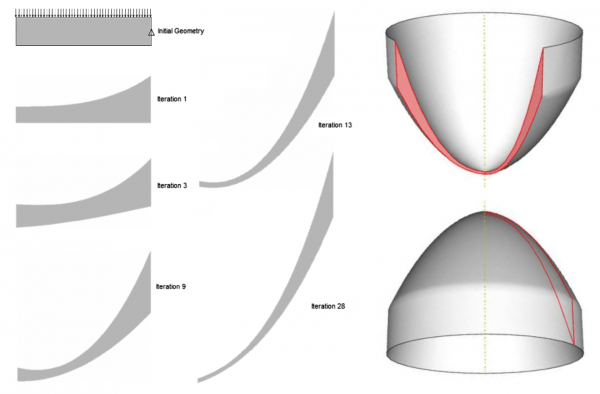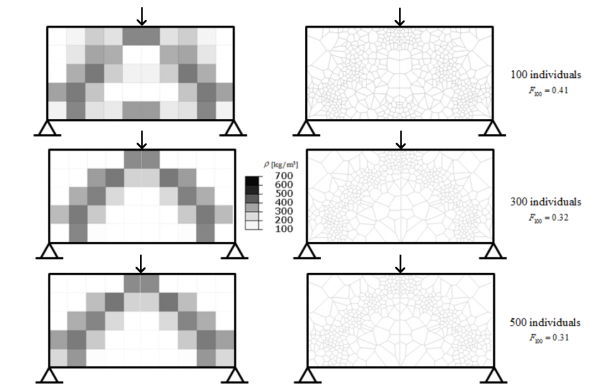Optimization of Structures
Optimization is related to finding minimum or maximal values of a given objective function f(x) by changing the optimization variables x. Sometimes, constraints are added to the problem in a form of equality or inequality functions.
For optimizing a structure, examples of objective functions are the stiffness of the structure, the total cost related to its construction, its weight, natural frequencies and reliability. The material strength, construction codes and specifications, geometric properties and weight can be defined as constraints limiting the feasible solutions.
When the geometry of the structure is set as the optimization variable, the problem is called form-finding. Practical examples of form-finding can be tracked back as arc-shaped constructions found in the ancient world such as bridges and domes, where compression stresses were developed in the material instead of tension stresses due to its particular shape. Large thin concrete shells are examples of modern form-finding applications.

Figure 1: Shape optimization of Axisymmetric Solid [Animation].
Further than its shape, the material distribution along the structure can be set as the optimization variable. This problem is called topological optimization. For example, the connection of beams defining a structure or the whole material distribution along a given domain can be looked for.

Figure 2: Density optimization of a foam structure.
Some types of structures allow the material optimization, such as laminated composite structures. The number os layers, thickness, material type and fiber orientation are examples of possibilities of optimization variables.

